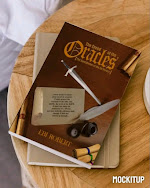Who are the 47 Ronin?
The 47 Ronin is also
described as the Akō incident. It was an 18th century historical event, a popular
nonfictional story about a samurai group that was made leaderless in Japan and
the quest for to avenge of the death of their rabbi.
The
death of Asano Naganori"
In 1701, Lord Asano
Naganori was a young daimyō (feudal lord) of the samurai elites. He was assaulted
by a court official named Kira Yoshinaka whose title was kōzuke no suke, a lord
in Edo castle. In reaction to the assault, Lord Asano Naganori drew his sword against
kira Yoshinaka which act was forbidden. For this, Lord Asano was sentenced to death, and so he made a ritual known as seppuku (suicide). The samurai was
made "Ronin"
The retainers or
samurai of Lord Asano were 47 in number. The death of their master Asano, made
them a group of sheep without shepherd. The death of their master propelled
them to consider a payback since they thought it was the proper action to take.
Even though revenge was prohibited in this case, they took a secret oath to
behead Lord Kira. After staying away from the Edo castle for one year and half,
the faithful Rōnin gathered in Edo castle as workmen and merchants and had
access to Kira's abode.
They stayed in Kirai’s
abode for two year which made Kira consider them harmless. But on December 14,
1702, they attacked Lord Kira in his mansion and beheaded him. They then took
his head and placed it on the tomb of their master, Asano. After that, the
Rōnin were forced to commit seppuku (ceremonial suicide) by the Shōgunate
officials. The Ronin were buried together in the same temple. However, one
among the 47 Ronin was pardon by a Shōgun official, named Ashiguru Terasaka.
He was exempted for running and reporting the death of Lord Kira and did live
until 87 years of age before he died in 1747. It is said that the weapons and
clothes they wore to carry out the attack are still intact in the temple were
they are buried as well. The place was made a holy place, a place where people visit
for a vacation till this day.
By D.K. Pencil
For: ACER Editorial








0 Comments